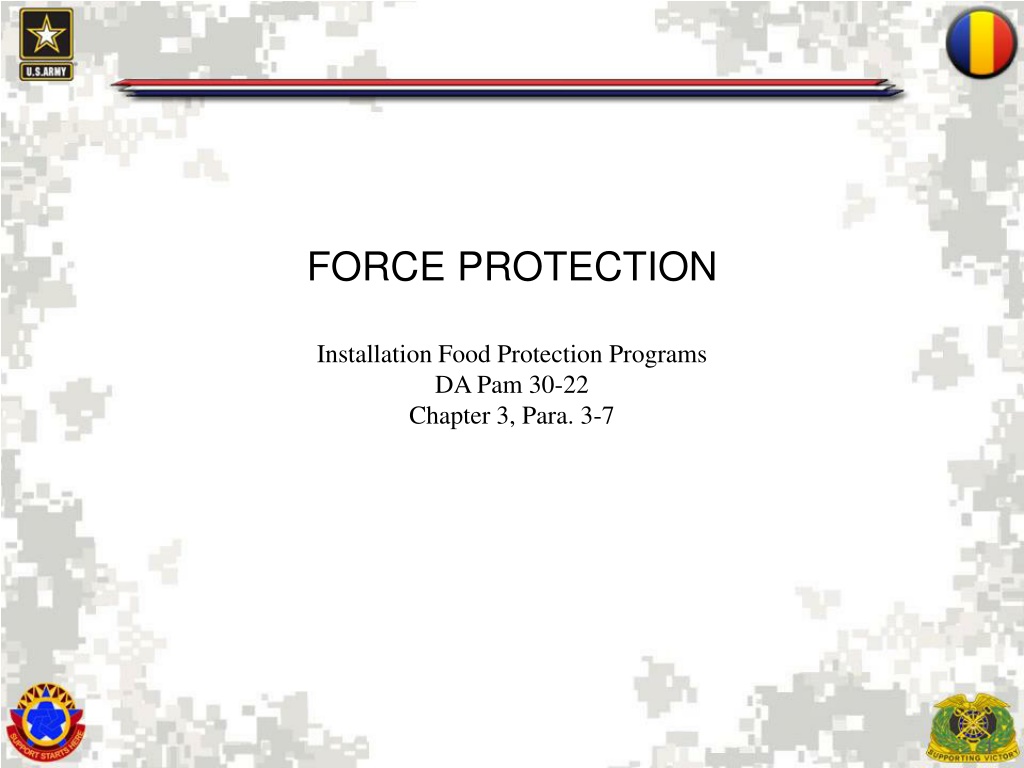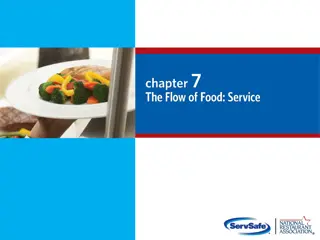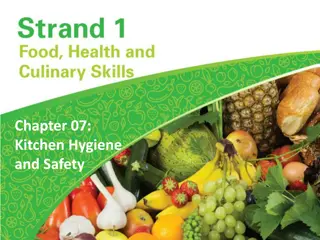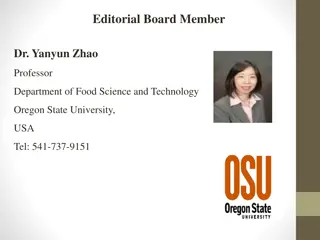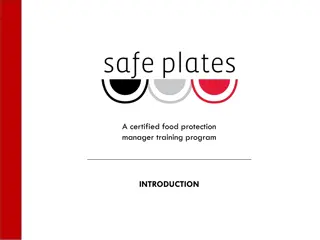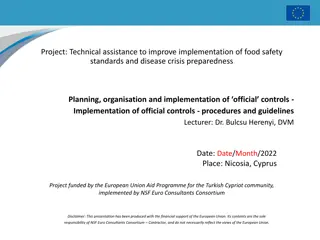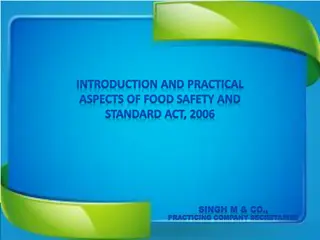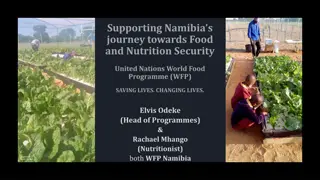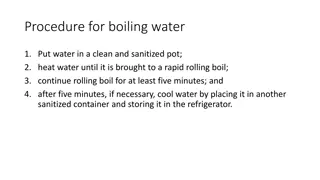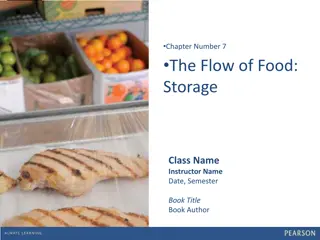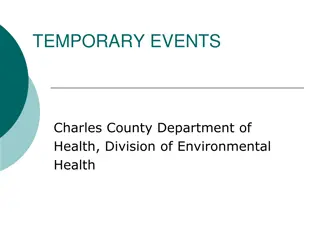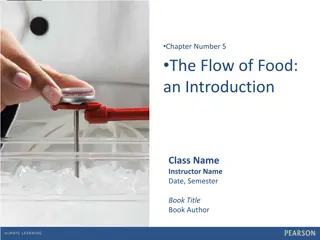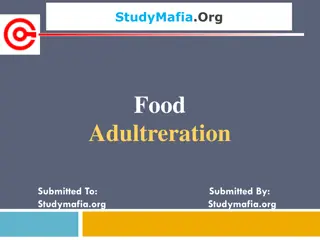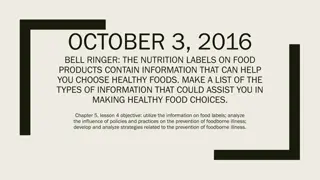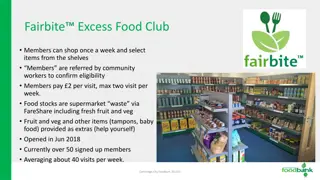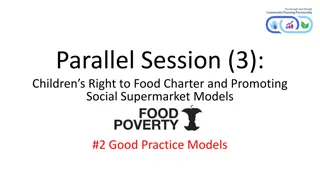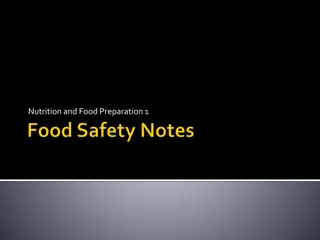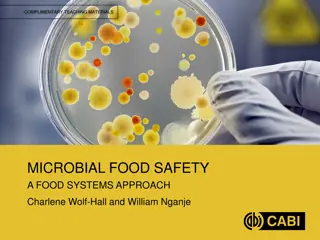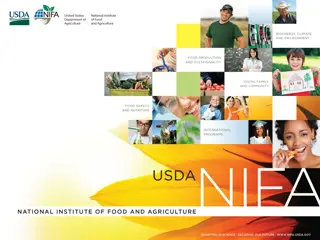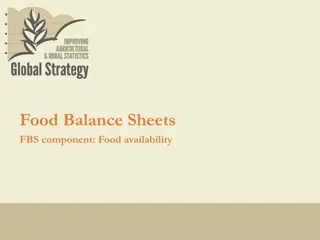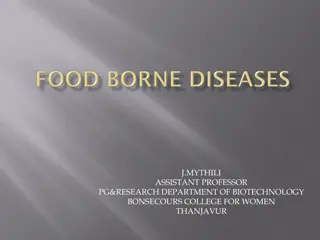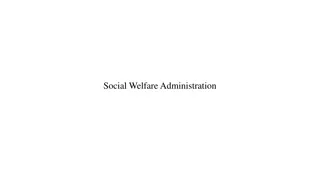Food Protection Programs Implementation Guidelines
This document outlines the requirements and procedures for food protection programs installation as per regulations specified in DA Pam 30-22. It covers aspects such as food risk management, training, integrated pest management, and the Army Composite Risk Management process. Emphasis is placed on monitoring time and temperature controls for potentially hazardous foods, incorporating HACCP principles, and complying with minimum monitoring requirements.
Download Presentation

Please find below an Image/Link to download the presentation.
The content on the website is provided AS IS for your information and personal use only. It may not be sold, licensed, or shared on other websites without obtaining consent from the author. Download presentation by click this link. If you encounter any issues during the download, it is possible that the publisher has removed the file from their server.
E N D
Presentation Transcript
FORCE PROTECTION Installation Food Protection Programs DA Pam 30-22 Chapter 3, Para. 3-7 1
Purpose Reiterate food protection requirements as prescribed by regulation. (DA PAM 30-22/TB MED 530) Provide reinforcement of: Food Risk Management procedures Risk management responsibilities of the DFM and FPM DA Forms 7458 & 7459 Provide guidance for food risk management implementation and follow-up. 2
Introduction Proactive development & execution of food safety & sanitation procedures. Coordination with supporting Prev. Med activity. Installation food safety & sanitation program requirements: Army Food risk management/Composite Risk Mgmt Food safety & sanitation training Integrated pest management/TB MED 530/Section VIII 3
Training & Integrated Pest Management Food Sanitation Training Supervisor Certification required every 4 years 4 hours annual refresher for all workers 8 hours initial training of all food service personnel prior to beginning work Integrated Pest Management (IPM) Plan FPM develops Coordination with DFM, PM, & DPW Track structural deficiencies & corrective actions Prescribes non-chemical controls & guidance for initiating pest control contracts 4
The Army Composite Risk Management Process 2 Assess Hazards Assessment Develop Controls & Make Risk Decision 3 1 Identify Hazards Management 4 5 Supervise & Evaluate Implement Controls 5
Food Risk Management Monitor time & temperature controls for PHFs Incorporation of HACCP principles: Monitoring Procedures Critical Control Limits (identified by hazard symbols on the production schedule within SCP-14) Record Keeping Defined Processes for Monitoring: Cold holding & storage Hot holding Cooking 6
TABLE 3-1 (Minimum Monitoring Requirements) 7
Temperature Standards Temperature Standards [O F] CAT FOOD Whole muscle beef, Lamb, & Veal; Made-to-order eggs; Fish; Canned Hams; Cooked Vegetables; All other pre-cooked foods packaged by industry. 145 (Internal product for 15 sec) 1 Ground beef products (hamburgers, cubed steak); Pork products; Bulk-prepared scrambled eggs; 155(Internal product for 15 sec) 2 Poultry products; Stuffed products (meats, pastas, peppers, etc ); Re-heated leftovers; Microwaveable foods 165(Internal product for 15 sec) 3 All cooked foods held hot on the serving line and in warmers. 1 140(Internal product) All chilled PHFs in refrigerated storage, cold sandwich bars, & salad bars: cut fruits & vegetables; mixed salads (potato, tuna, chicken, egg, etc ); custards & puddings. 2 40(Internal product) All refrigeration units (reach-in & walk-in); salad bars; sandwich bars; dessert bars (containing custards & puddings). Must maintain an ambient temperature of 38 degrees U=you 38 (Ambient) 8
RISK MANAGEMENT DATA LOG COOKING, DA FORM 7458 For use of this form, see DA PAM 30-22; the proponent agency is DCS. G 9
RISK MANAGEMENT DATA LOG SERVING, DA FORM 7459 For use of this form, see DA PAM 30-22; the proponent agency is DCS. G 10
TWO-STEP COOLING METHOD The two step cooling method is a requirement (TB MED 530) 1st step 140 to 70 within the first two hours after being removed from the line 2nd step - 70 to 40 within four hours after being placed under refrigeration Ice bath after changing to shallow pans and making batches smaller, blast chill if you have the capability 11
How to Implement Have blank copies of DA Forms 7458 & 7459 on hand Simply attach to production schedules Ensure forms are available to all shift leaders/supervisors DFM reviews programmed menu for the week (SCP 14 will identify all PHF s) Pre-select menu items to be monitored for each meal period each day Enter item description & category on appropriate forms (cooking, cold holding, hot holding) Identify individuals responsible for monitoring (by meal period and day) 12
How to DFM spot checks monitoring logs at end of each meal period Ensure monitoring was performed Ensure forms are completed properly Ensure forms are legible Note any food safety violations DFM collects & files monitoring logs. At end of each day Note recurring discrepancies File with Production Schedules 13
How to Follow-up Actions Program training to address recurring deficiencies and who is responsible for what Cooking temperatures Hot/cold holding temperatures Cooling methods Thermometer calibration Initiate & track work orders to correct faulty equipment Hot water capability of steam table Temperature calibration of warming units, griddles, ovens, and refrigerators 14
Questions ? 15
